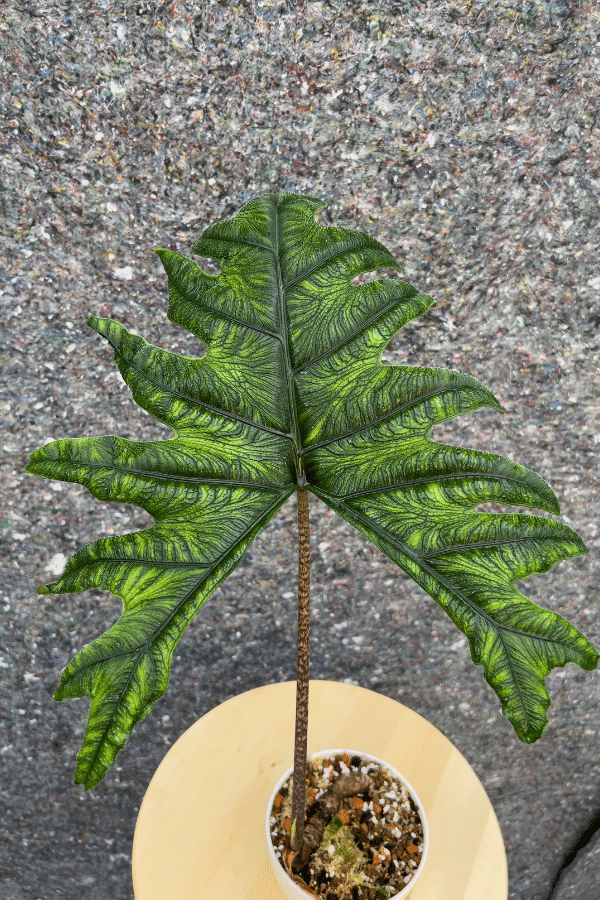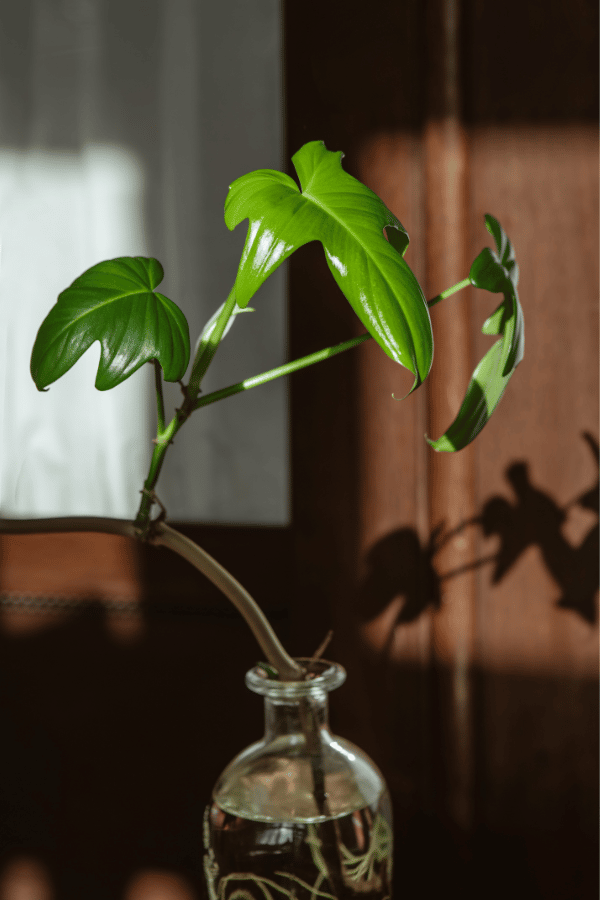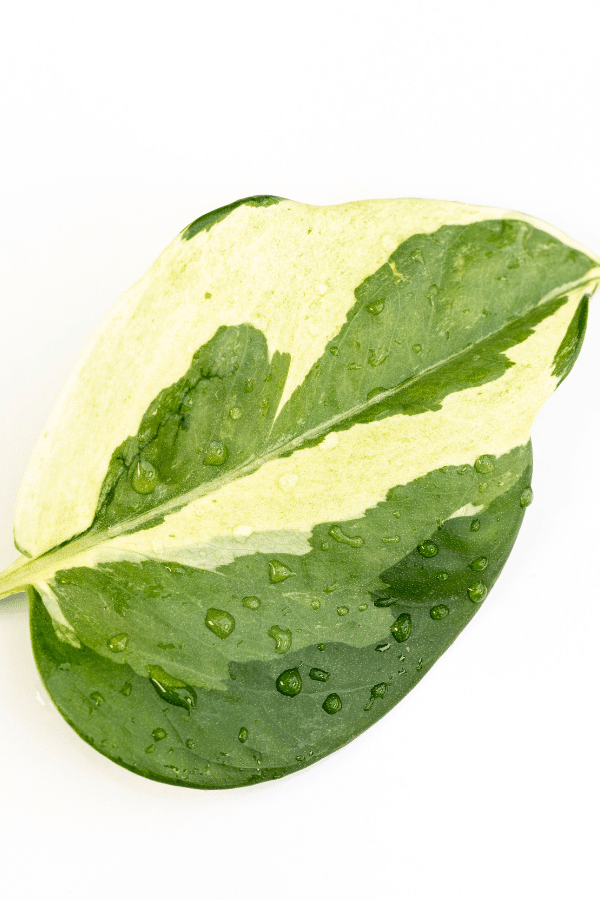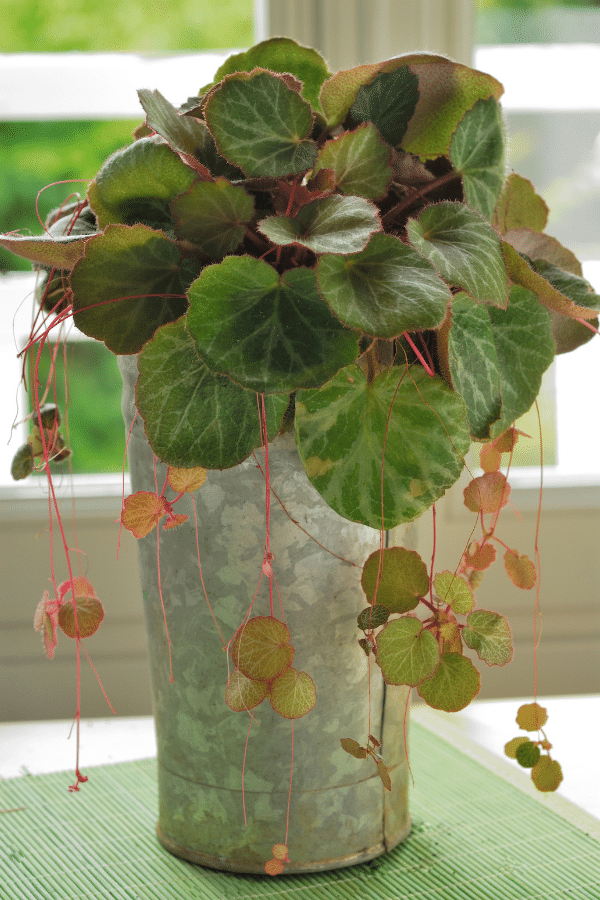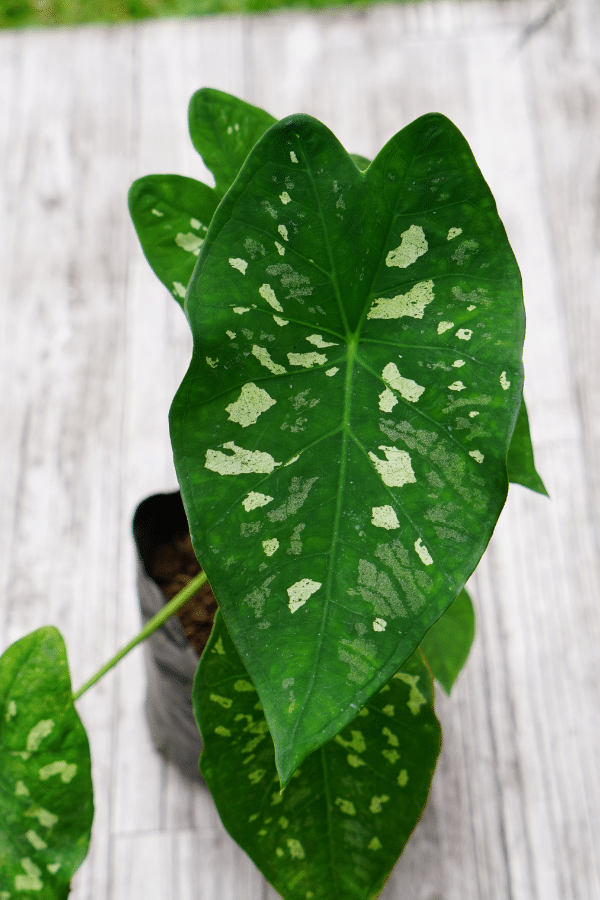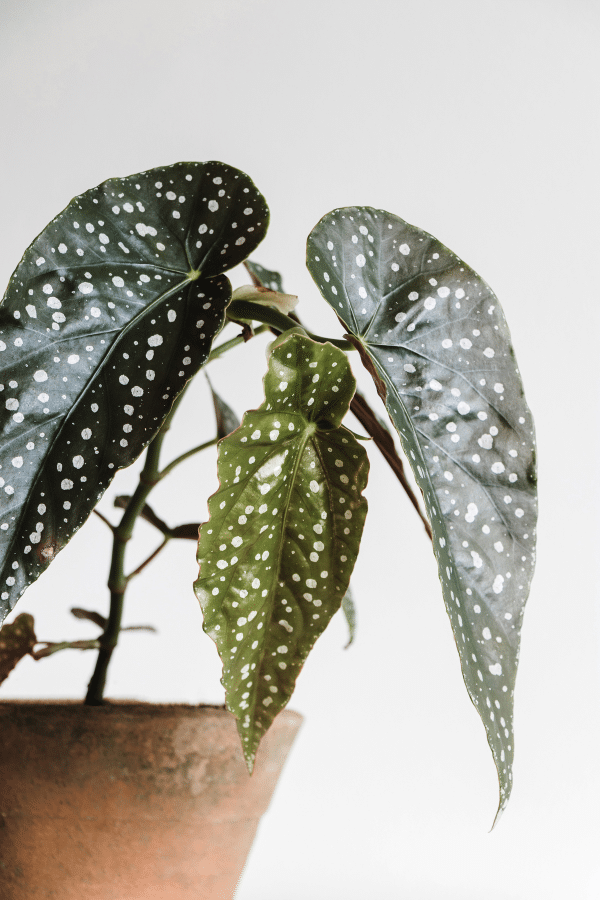Guzmania Lingulata
Scientific Name: Guzmania Lingulata
Common Name: Bromeliad Scarlet Star
Guzmania Lingulata care is an easy Bromeliad to grow and care for. Know that Scarlet Star Bromeliads will only live for three to five years, flowering just once after reaching full maturity.
To give this Bromeliad plant the best care, it requires well-draining soil, keep the soil moist by watering often, provide it with bright indirect sunlight, temperatures ranging from 60-90F, and average to high humidity levels.
Quick Care Overview
| Common Name | Bromeliad Scarlet Star |
| Scientific Name | Guzmania Lingulata |
| Family | Bromeliaceae |
| Origin | Central & South America |
| Growth Rate | Slow |
| Identification | Bright red top center with dark green leaves surrounding |
| Height | Up to 18 inches tall |
| Soil | Well-draining soil |
| Water | Keep the soil moist |
| Temperature | 65-90F |
| Sunlight | Bright indirect sunlight |
| Toxic to Cats & Dogs | No |
| Toxic to Humans | No |
| Pests | Aphids, scale |
| Diseases | Root rot |
Below we will dive deep into this Guzmania Lingulata care guide.
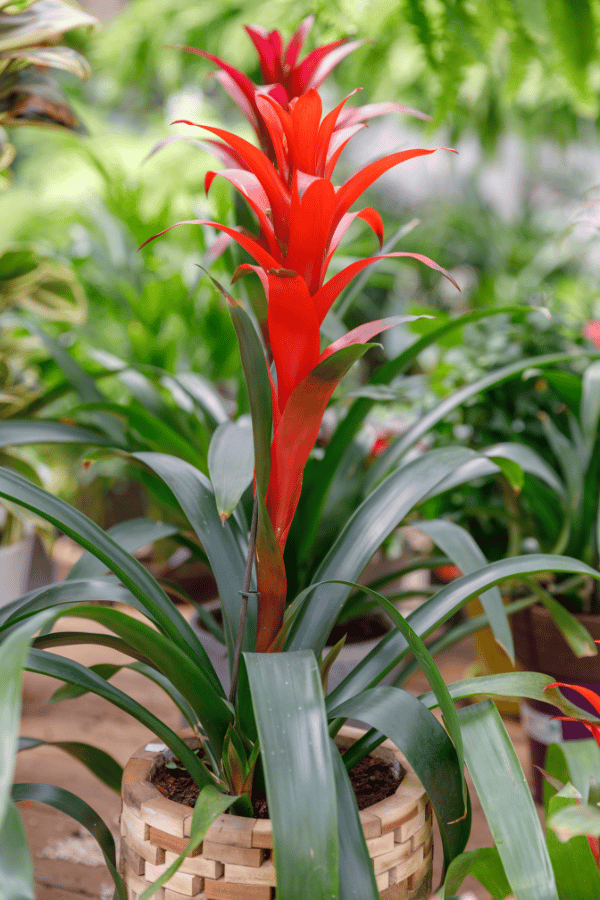
Guzmania Lingulata History
Central and South American native, Guzmania Lingulata, otherwise known as the Scarlet Star Bromeliad, is a trendy epiphytic plant also known as the droophead tufted airplant, as it is seemingly able to live off of the air.
Guzmania Lingulata Identification
The Scarlet Start Bromeliad presents with bright red bracts amongst shiny green leaves after the plant had reached maturity. This plant will flower once after about four years, producing white, small star shaped blooms. Bracts will form in the center of the plant, lasting for about five months. The flowers will become almost hidden by the bract that will turn from green to red. This plant will die after flowering.
Guzmania Lingulata Growth Facts
This plant will reach maturity after 3-5 years, will flower and then die.
How Big Does a Guzmania Lingulata Get?
The Scarlet Star Bromeliad may grow up to 18” tall.
Guzmania Lingulata Care
The Scarlet Star Bromeliad is incredibly easy to care for. Just ensure that you do not overwater this plant and provide it with ample sunlight.
Guzmania Lingulata Soil
When selecting a growing medium for your Guzmania Lingulata, the best soil to purchase is potting soil indicated for orchids or bromeliads. Alternatively, you may create your own potting mix by combing coco coir, perlite, and peat moss at a 1:1:1 ratio. Additionally, you should remember that this plant has very shallow roots, so it will not require a deep container. Placing pebbles at the base of your container may help with drainage and prevent root rot due to excess moisture.
Guzmania Lingulata Fertilizer
Your Bromeliad will benefit from a monthly feeding from balanced liquid fertilizer diluted by 50%. Do not feed during the fall or winter.
Guzmania Lingulata Watering
The Scarlet Star Bromeliad will need to be consistently watered, especially during the warm growing months of spring and summer. However, ensure that you do not allow your plant to become oversaturated with water, as this may lead to root rot. Watering frequency may be reduced in winter. As this plant is sensitive to chemicals in the tap water, rainwater, purified, or distilled water is preferred.
Guzmania Lingulata Light Requirements
Scarlet Star requires bright light year-round. If this plant does not receive adequate light, it may not flower. However, too intense of direct sunlight may lead to foliage scorching of this plant.
Guzmania Lingulata Temperature & Humidity
As a tropical plant, the Scarlet Star Bromeliad likes to be kept in warm humid temperatures, between 65 to 90 degrees Fahrenheit. You should not expose your plant to large fluctuations and temperature. Therefore, keep it away from AC units, heaters, vents, air drafts, and cold windows. Additionally, the Scarlet Star bromeliad requires above average humidity to grow well. To keep this plant happy, you should install a humidifier, pebble tray, or keep it in a naturally humid place, such as a bathroom.
Repotting Guzmania Lingulata
As Bromeliads have very small root systems, they do best when remaining slightly rootbound. You should repot your bromeliad after you see roots growing out from its container holes. Repotting should be done in spring. Ensure while you are repotting that you do not plant your bromeliad too deeply. Select a container size that is 1-2 inches larger than the previous container. Plant the bromeliad to the base of its leaves. Repot your bromeliad in fresh soil, tamp lightly ensuring that the plant stays upright. Water thoroughly and place in indirect light.
Guzmania Lingulata Maintenance & Pruning
The Scarlet Scar Bromeliad will not require much pruning. However, any dead or diseased leaves may be pruned away at the base using sharp, clean shears.
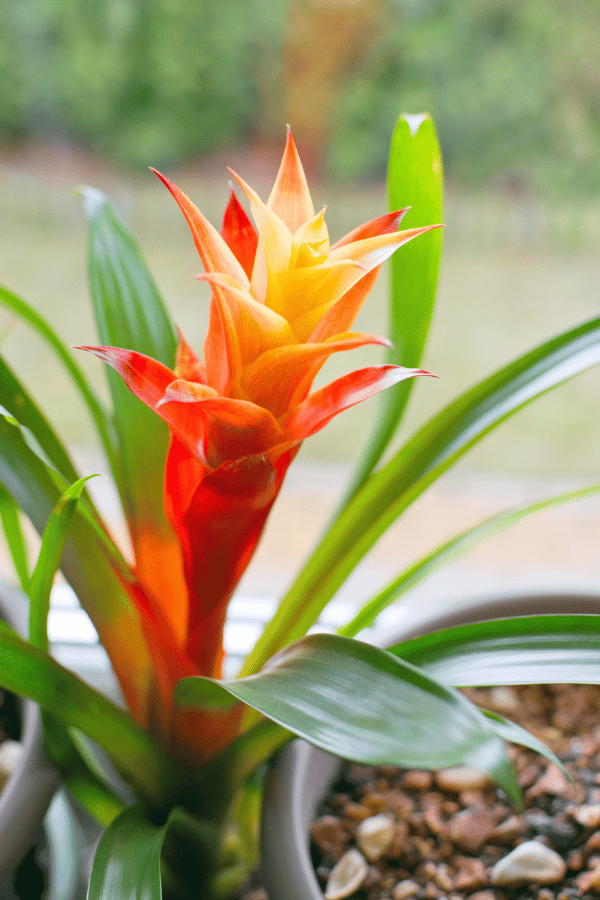
Guzmania Lingulata Propagation
You may propagate your Scarlet Star after the plant has matured and has begun producing pups or offsets. When pups grow to become around 3 inches long, they may be removed from the mother plant and repotted. Propagation is best done in spring so it has time to grow roots and flourish during the active growing season.
Guzmania Lingulata Toxicity
Toxicity to Humans
The Scarlet Star Bromeliad is not considered toxic to humans. However, it still should not be ingested.
Toxicity to Cats & Dogs
Guzmania Lingulata is not considered toxic to cats or dogs. However, it still may cause stomach upset if consumed. You should take care not to allow your pet to consume this plant.
Guzmania Lingulata Problems
Guzmania Lingulata Leaves Turning Yellow
When foliage of the Scarlet Star Bromeliad turns yellow it is often due to temperature fluctuations or lack of nutrients.
Guzmania Lingulata Leaves Turning Brown
Common causes of the Scarlet Star Bromeliad turning brown is due to age, too much direct sunlight, or overwatering. Alternatively, browning may also be due to lack of humidity.
Guzmania Lingulata Diseases
While the Scarlet Start Bromeliad is considered relatively disease-free, it still may suffer from issues related to overwatering, such as root rot. Do not overwater your plant and ensure that it does not sit in excess water within the plant’s drainage tray.
Guzmania Lingulata Pests
Although considered relatively pest-resistant, the Scarlet Star Bromeliad may become susceptible to infestation from common indoor houseplant pests such as aphids, scale, and more. Upon identification of an infestation, isolate your plant, and treat with a pesticide such as neem oil or insecticidal soap. Ensure to follow all label instructions.

